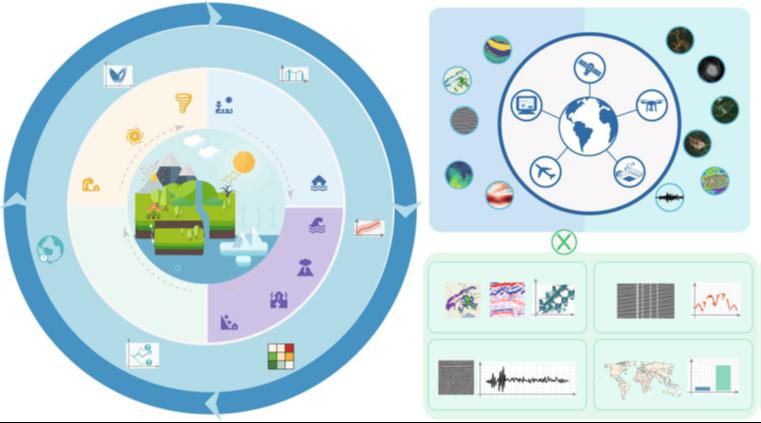Data mining and analysis are critical for preventing or mitigating natural hazards. However, data availability in natural hazard analysis is experiencing unprecedented challenges due to economic, technical, and environmental constraints. Recently, generative deep learning has become an increasingly attractive solution to these challenges, which can augment, impute, or synthesize data based on these learned complex, high-dimensional probability distributions of data. Over the last several years, much research has demonstrated the remarkable capabilities of generative deep learning for addressing data-related problems in natural hazards analysis. Data processed by deep generative models can be utilized to describe the evolution or occurrence of natural hazards and contribute to subsequent natural hazard modeling. Here we present a comprehensive review concerning generative deep learning for data generation in natural hazard analysis.

Natural hazards, including floods, earthquakes, landslides, and volcanic eruptions, pose significant threats to communities worldwide. Accurate data is essential for understanding, predicting, and mitigating the effects of these events. However, data availability often faces unprecedented challenges due to economic, technical, and environmental constraints. Traditional data collection methods are frequently hampered by low resolution, missing information, noise, and scarcity. These limitations hinder the development of reliable models for hazard prediction and risk assessment.
The paper emphasizes that generative deep learning, a rapidly evolving subfield of artificial intelligence, offers a promising solution to these data-related challenges. Generative models, such as Variational Autoencoders (VAEs) and Generative Adversarial Networks (GANs), can augment, impute, or synthesize data based on learned complex, high-dimensional probability distributions. These models have demonstrated remarkable capabilities in various fields, and their application in natural hazard analysis is now gaining significant traction.
The authors provide a comprehensive review of the motivations for employing generative deep learning in natural hazard analysis. They discuss how these models can enhance data quality, reduce uncertainty, and provide additional data at a relatively low cost. For instance, improving the resolution of meteorological data via deep generative models can strengthen the identification of extreme precipitation events and facilitate the analysis of related natural hazards. Similarly, generating diverse synthetic samples of hazard scenarios can enhance the training of deep learning models, addressing the challenge of insufficient training data.
The paper also highlights several successful applications of deep generative models in natural hazard analysis. For example, GANs have been utilized to generate remote sensing images of tropical cyclones, addressing class imbalance problems in storm data. Variants of VAEs have been employed to process low-resolution, noisy seismic images, demonstrating excellent reconstruction capabilities.
Despite the promising advancements, the authors acknowledge the challenges associated with leveraging generative deep learning in natural hazard analysis. These include improving the reliability of generated data, ensuring physical consistency, and addressing the computational demands of training deep generative models. The paper emphasizes the need for further research and development to overcome these obstacles and fully realize the potential of generative deep learning in this field.
Looking ahead, the researchers explore opportunities for integrating deep generative models into initiatives like the Digital Twin Earth project, which aims to create high-fidelity simulations of Earth's processes. Such integration could provide more accurate and real-time estimates of natural hazards, contributing to better-informed decision-making and more effective risk management strategies.
Sources:
Artificial Intelligence Review
https://link.springer.com/article/10.1007/s10462-024-10764-9 .
Provided by the IKCEST Disaster Risk Reduction Knowledge Service System
Comment list ( 0 )
